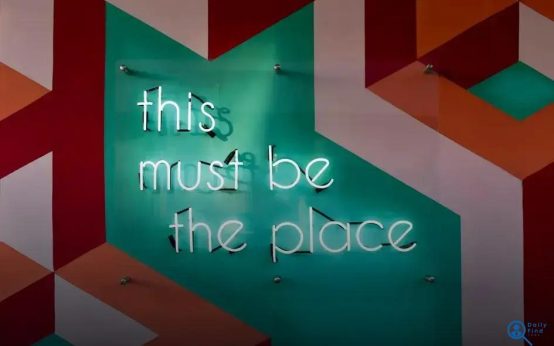Sending a Follow-Up Email After an Interview is crucial for leaving a memorable impression. This step can often make the difference between getting a call-back or being forgotten. The way you craft your message matters immensely, from the subject line to the timing. In the sections below, we’ll discuss why it’s essential, how to avoid common mistakes, and more. Make sure to tailor each email to your interview to show genuine interest and enthusiasm.
Why Sending a Follow-Up Email Matters
Sending a follow-up email shows determination and professionalism. After an interview, it is crucial to stand out to the hiring manager. A follow-up email conveys your continued interest in the position and can remind the interviewers of your qualifications.
Keeping Communication Open: In many cases, interviewers are handling numerous candidates. A follow-up serves as a gentle reminder, ensuring that your application remains in their focus.
Furthermore, it provides an opportunity to clarify any parts of the interview where you felt you could have given a better answer or to add additional information that may have been overlooked during the interview.
Building Positive Relationships:
Another advantage is that it establishes a dialogue with the potential employer, fostering a positive relationship. Even if you don’t get this particular job, leaving a good impression can be beneficial for future opportunities at the same company.
In essence, while it may seem simple, a well-crafted follow-up email can be a pivotal factor in the hiring process. It demonstrates that you are proactive, enthusiastic, and professional.
Crafting the Perfect Subject Line
Understand the Importance of the Subject Line
In the competitive world of job applications, every detail counts. Your subject line is the gateway to your follow-up email and it can make or break your chances of getting noticed. It should be concise yet intriguing enough to encourage the recipient to open the email. Think of it as the headline of a news article—it should be catchy but relevant.
Be Straightforward and Clear
When crafting your subject line, clarity is key. Avoid using jargon or unnecessary words. You want the hiring manager to instantly understand the purpose of your email. Use simple language with a direct approach. For instance, “Thank You for the Interview” or “Follow-Up on Interview” can do the trick effectively.
Include Specific Details
To enhance relevance, include specific details related to the interview. You might mention the job title or the date of your interview. This personal touch can help your email stand out in a crowded inbox. An example could be, “Thank You for the Marketing Manager Interview Opportunity – June 5th”.
Add a Personal Touch
A personalized subject line shows that you remember the discussions and are genuinely interested in the position. Consider including the name of the person you interviewed with, or a unique point from the conversation. Personalized subject lines grab more attention and show attentiveness.
Remember, the perfect subject line balances professionalism and personality. It should reflect your enthusiasm for the position without sounding too casual. Follow these guidelines and you’ll be one step closer to making a memorable impression with your follow-up email.
Key Elements of a Memorable Follow-Up
Crafting a follow-up email after an interview is a crucial step in the hiring process. To make your follow-up memorable, there are several key elements you should include:
- Personalization: Begin your email by addressing the interviewer by name and referencing specific conversations or topics discussed during the interview. This shows attention to detail and helps in establishing a connection.
- Gratitude: Express your thanks for the opportunity to interview and for any insights the interviewer shared. A genuine show of appreciation can reinforce a positive impression.
- Enthusiasm: Reiterate your interest in the position and the company. Let the employer know why you are excited about the opportunity and why you are a good fit for their team.
- Clarification and Additional Information: Use this chance to clarify any points from the interview that might benefit from further explanation. You can also add information you may have forgotten to mention that supports your candidacy.
- Contact Information: Ensure that your email signature includes your contact details. This makes it easier for the interviewer to reach you if needed.
Incorporating these elements can help your follow-up email stand out and leave a lasting impression. It’s important to strike the right balance between professional and personable, so take the time to fine-tune your message for the best impact.
Common Mistakes to Avoid in Follow-Ups
Avoiding common mistakes can significantly improve your chances of making a positive impression with your follow-up email after an interview. One common error is waiting too long to send your message. A follow-up should be timely, ideally within 24-48 hours, to show enthusiasm and professionalism.
Another mistake is sounding too generic. Personalize each email by mentioning specific conversation points or insights from the interview. This shows the interviewer that you were attentive and are genuinely interested in the role.
Avoid being overly formal or stiff. Your email should match the tone of previous interactions while remaining respectful and professional. Also, don’t forget to proofread your email. Spelling and grammatical errors can make you appear careless.
Some candidates make the error of being too pushy. While it’s important to express interest, avoid language that might seem desperate or demanding. Finally, always express gratitude for the opportunity to interview and for the interviewer’s time. This courteous touch can leave a lasting positive impression.
Timing: When to Hit Send
Knowing the ideal moment to send your follow-up email is crucial. Timing can significantly impact whether your message is opened and read. After an interview, it’s best to send your follow-up email within 24 hours. This shows your enthusiasm and keeps you fresh in the interviewer’s mind. Why 24 hours? This timeframe is optimal because it strikes the balance between eagerness and professionalism. It doesn’t come off as too desperate or unnecessarily delayed.
Consider the interviewer’s working schedule and typical business hours when you hit send to maximize the chances of a quick response. Sending your email in the morning or early afternoon can ensure it’s seen at the top of the recipient’s inbox. Avoid sending emails late at night or over the weekend as they may get overlooked.
Also, keep in mind different time zones if your interviewer is in a different region. Ensure that your email lands in their primary working hours for better visibility. By strategically timing your follow-up, you increase the potential for engagement and demonstrate your awareness and respect for the interviewer’s time.


 Work-Life Balance: Why It Matters More Than Ever Today
Work-Life Balance: Why It Matters More Than Ever Today  How to Deal With a Toxic Work Environment Easily
How to Deal With a Toxic Work Environment Easily  The Best Certifications to Boost Your Resume: Top Picks Revealed
The Best Certifications to Boost Your Resume: Top Picks Revealed